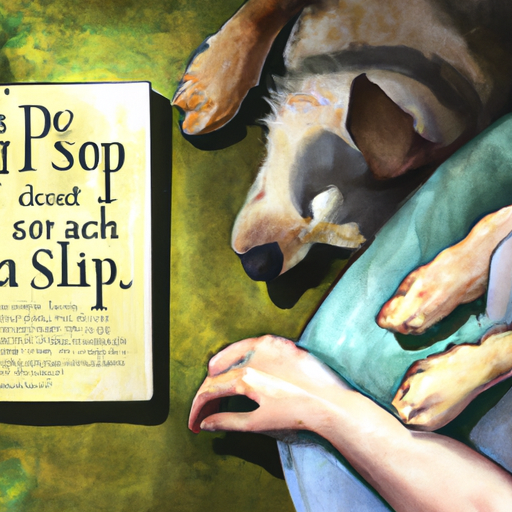Introduction
As a caregiver to your beloved pet, you have probably found yourself asking how you can help your dog sleep better. Dogs, like humans, need a good amount of sleep to stay healthy and happy. A lack of sleep can lead to behavioral issues and health problems. This guide will provide you with comprehensive strategies to help your furry friend fall asleep.
Understanding Your Dog’s Sleep Pattern
Just like humans, dogs have sleep cycles. However, their sleep pattern differs significantly from ours. A dog’s sleep cycle includes:
- NREM (Non-Rapid Eye Movement) – the initial phase of sleep where the dog’s body starts to relax and slow down.
- REM (Rapid Eye Movement) – the phase where a dog dreams.
- SWS (Short-Wave Sleep) – the deepest sleep phase for dogs.
Dogs spend about 44% of their time in NREM, 23% in REM, and the remaining 30% in light sleep. Understanding this pattern will help you provide a conducive environment for your dog’s sleep.
Creating a Conducive Environment
A good sleep environment can make a world of difference. Here are some tips to set up a perfect sleep haven for your dog:
-
Bedding: Ensure your dog has a comfortable and warm bed. The bed should be of appropriate size and preferably located in a quiet, dimly lit area.
-
Temperature: Dogs sleep best in a cool environment. Keep the room temperature between 60°F to 70°F (15°C to 21°C).
-
Noise: Dogs are sensitive to sound. Try to minimize loud noises and abrupt disruptions.
-
Light: Dogs sleep better in the dark. Consider using blackout curtains or a sleep mask for your dog.
Establishing a Routine
Dogs thrive on routine. It gives them a sense of security and can greatly improve their sleep. Here’s a simple routine you might consider:
- Morning walk or run
- Breakfast
- Midday nap
- Afternoon walk or playtime
- Dinner
- Evening relaxation or play
- Bedtime
This routine provides regular exercise, which promotes good sleep, and regular meal times, which help regulate your dog’s internal clock.
The Power of Diet
What your dog eats can affect how well they sleep. Try to feed your dog a balanced diet and avoid feeding them close to bedtime. Too much water before bed can also lead to nighttime bathroom trips, disrupting your dog’s sleep.
| Food Type | Effect on Sleep |
|---|---|
| High protein diet | Promotes restful sleep |
| Late night snacks | Can cause restlessness |
| Too much water | Leads to frequent urination |
Massage and Relaxation Techniques
Just like humans, dogs can benefit from relaxation techniques. Massage, in particular, can be very effective. Here’s how you can do a basic dog massage:
- Start by petting your dog gently all over.
- Use a flat palm to slowly stroke down their back.
- Use your fingers to make circular motions down the sides of their body.
- Be gentle and observe your dog’s reactions.
The Role of Medical Conditions
Sometimes, persistent sleep issues may indicate a medical problem. If your dog is having trouble sleeping despite your best efforts, it’s worth scheduling a visit to the vet. Common conditions that can affect sleep include arthritis, thyroid issues, and anxiety.
Frequently Asked Questions
Q: How much sleep does a dog need?
A: On average, dogs need about 12-14 hours of sleep per day. Puppies and older dogs usually require even more.
Q: Can I use human sleep aids for my dog?
A: No, many human sleep aids are toxic to dogs. Always consult with a vet before giving your dog any medication.
Q: My dog sleeps all day. Is that normal?
A: It can be, especially for puppies and older dogs. However, if your dog is lethargic and not interested in activities they normally enjoy, it may be worth a visit to the vet.
By understanding and addressing your dog’s sleep needs, you can ensure that they’re getting the rest they need to stay happy and healthy. Good night, and sweet dreams to your canine companion!



